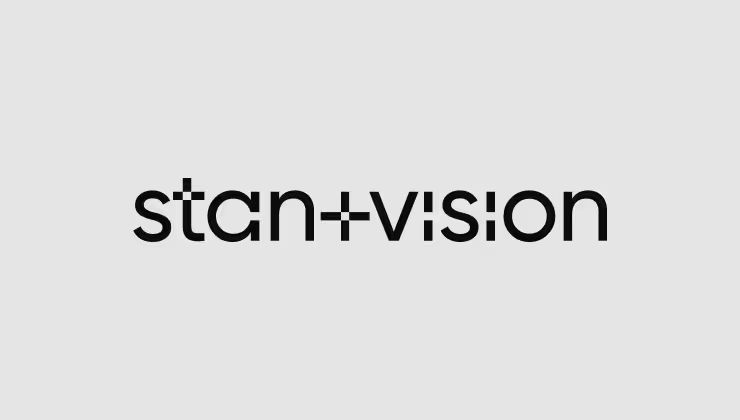
Understanding the SaaS landscape
Before diving into the design process, it’s crucial to grasp the fundamentals of SaaS. SaaS apps require effective UX design to enhance user experience, reduce churn rates, and ensure a customer-centric approach throughout the development process. Unlike traditional software, SaaS products are hosted centrally and accessed via the internet, offering scalability, flexibility, and subscription-based pricing models. The user experience (UX) in SaaS products heavily influences customer retention, user satisfaction, and ultimately, the product’s success.
Conducting thorough user research
.avif)
The foundation of any successful SaaS product lies in a deep understanding of its users. Conducting thorough user research is the first critical step in the design process to improve user engagement. The primary goal here is to identify the pain points and challenges that your target audience faces in their daily workflows. Understanding these issues will help you tailor your product to solve real problems, making it indispensable to your users. By focusing on these aspects, companies can enhance user satisfaction and increase their chances of keeping users engaged with their products.
Creating detailed user personas is another essential aspect of this step. User personas are semi-fictional characters based on your research that represent your ideal customers. They help you visualize and understand the different types of users who will interact with your product, guiding your design decisions to meet their specific needs.
In addition to understanding your users, it’s equally important to gather insights into the competitive landscape. Analyzing existing SaaS products that cater to a similar audience can reveal gaps in the market or features that resonate well with users. This competitive analysis will help you identify opportunities to differentiate your product and offer unique value propositions.
Best practices:
To gather a comprehensive understanding of your users, employ a variety of research methods. Surveys can help you collect quantitative data on user preferences, while interviews and focus groups provide qualitative insights into user behavior and motivations. Usability tests allow you to observe how users interact with existing products or prototypes, uncovering potential usability issues. SaaS companies, in particular, benefit from understanding user needs to enhance engagement and retention. An easy way to collect this data is to use a functional AI survey generator.
When focusing on B2B SaaS products, it’s crucial to understand the specific needs of businesses. B2B products often require integration with existing workflows and systems, so your research should explore how your product can seamlessly fit into these environments. By thoroughly understanding both the user and market landscape, you’ll be better equipped to design a product that meets user needs and stands out in the market.
Creating a design strategy

With a solid understanding of your users and the competitive landscape, the next step is to create a design strategy that incorporates SaaS UX design principles. This strategy serves as the blueprint for your entire design process, ensuring that every decision aligns with your overarching goals. The first step in crafting your design strategy is to define clear design goals. These goals should align with your business objectives, whether it’s increasing user acquisition, improving engagement, or boosting retention rates.
Establishing design principles is another crucial element of your strategy. Design principles are guidelines that ensure consistency, usability, and accessibility across your product. For example, you might prioritize simplicity in your design to make the product easy to use, or focus on accessibility to ensure that the product is usable by people with disabilities.
Mapping user journeys is a key activity within the design strategy. User journey mapping involves visualizing how users will interact with your product from the moment they sign up to when they become advanced users. This exercise helps you identify potential pain points and opportunities to enhance the user experience at every stage of the customer lifecycle. Integrating user feedback and support into this process allows your SaaS solutions to evolve according to user expectations and needs, thereby enhancing user experience and satisfaction.
Best practices:
Adopting an iterative design process is crucial for developing a successful SaaS product. Instead of aiming for a perfect design in one go, embrace an approach where you continuously refine your designs based on user feedback and evolving business requirements. This iterative approach allows you to respond to real-world challenges and opportunities as they arise, leading to a more user-centric product.
Collaboration is another best practice that cannot be overstated. Involve cross-functional teams in your design process, including designers, developers, product managers, and marketers. Each team brings a unique perspective that can enrich the design process, ensuring that the final product is well-rounded and aligned with both user needs and business goals.
Developing a distinct visual identity

Once your design strategy is in place, the next step is to develop a visual identity for your SaaS product with an intuitive interface. A strong visual identity not only makes your product more recognizable but also builds trust and credibility with users. Start by designing a memorable logo that encapsulates the essence of your product. Your logo should be simple yet distinctive, making it easy for users to identify your product across different platforms.
Along with the logo, establish a cohesive brand identity that includes a consistent color palette and typography. The colors and fonts you choose should not only align with your brand’s personality but also enhance the usability of your product. For instance, choosing a color palette with high contrast can improve readability, while selecting legible fonts ensures that your content is accessible to all users.
UI design components, such as buttons, icons, and forms, are another crucial aspect of your visual identity. These elements should be designed consistently across the product to create a seamless and intuitive user experience. Consistent UI design not only makes your product easier to use but also reinforces your brand identity, making your product more recognizable and trustworthy.
Best practices:
When developing your visual identity, prioritize simplicity and clarity. Avoid cluttering the interface with too many design elements, as this can overwhelm users and make the product difficult to navigate. Instead, focus on creating a clean and minimalist design that highlights the most important features and functions.
Responsive design is another essential consideration when developing your visual identity. Ensure that your product is accessible and usable across various devices and screen sizes, from desktops to smartphones and tablets. A responsive design not only improves the user experience but also increases the likelihood that users will continue using your product regardless of the device they are on.
Designing intuitive UI/UX

With a strong visual identity in place, the next step is to design a user-friendly and intuitive user interface (UI) and user experience (UX) for your SaaS product. Information architecture is a critical consideration in this process. Information architecture involves organizing and structuring content and features in a way that makes them easy to find and use. A well-designed information architecture helps users navigate the product efficiently, reducing the time and effort required to achieve their goals.
Navigation design is another key consideration in creating an intuitive UI/UX. Your navigation paths should be simple and straightforward, guiding users to their desired outcomes with minimal friction. Whether through a primary navigation menu, breadcrumbs, or contextual links, ensure that users can easily find what they are looking for without getting lost or frustrated.
Interactive prototyping is a powerful tool for validating your design decisions. By creating interactive prototypes, you can simulate the user experience and gather early feedback before the product is fully developed. Prototypes allow you to test different design variations, identify potential issues, and make necessary adjustments before moving into full-scale development.
Best practices:
User-centered design should be at the core of your UI/UX design process. Always prioritize the needs and preferences of your users, rather than simply following design trends or personal preferences. Conduct usability tests throughout the design process to gather feedback and insights from real users, and use this information to refine your designs.
Consistency is another crucial aspect of good UI/UX design. Ensure that design patterns, terminology, and interactions are consistent throughout the product. Consistency reduces the cognitive load on users, making the product easier to learn and use. It also helps create a cohesive and polished user experience, which can significantly improve user satisfaction and retention.
Conducting rigorous user tests

User testing is an essential part of the design process, allowing you to validate your designs and ensure that they meet user needs. Usability testing is one of the most effective methods for observing how users interact with your product. By conducting usability tests, you can identify pain points, areas of confusion, and potential barriers to adoption. This information is invaluable for refining your designs and improving the overall user experience. These insights are particularly crucial for enhancing a SaaS platform tailored to meet user needs.
A/B testing is another powerful method for optimizing your product’s design. A/B testing involves comparing two or more design variations to see which one performs better in achieving specific goals, such as increasing conversions or improving user engagement. By testing different design elements, you can make data-driven decisions that enhance the effectiveness of your product.
Accessibility testing is also critical to ensure that your product is usable by all users, including those with disabilities. Conduct tests with assistive technologies such as screen readers, and ensure that your design complies with accessibility standards like WCAG (Web Content Accessibility Guidelines). Accessibility testing not only helps you reach a broader audience but also demonstrates your commitment to inclusivity.
Best practices:
Start testing as early as possible in the design process, even with low-fidelity prototypes. Early testing allows you to identify and address issues before they become more challenging and costly to fix. Conduct tests iteratively throughout the development cycle, continuously gathering feedback and making improvements.
When analyzing test results, focus on actionable insights that can directly inform design decisions. Rather than simply identifying problems, use the feedback to guide specific changes that will improve the user experience. Remember that user testing is not a one-time activity but an ongoing process that continues even after the product is launched. Regular testing and iteration are key to maintaining a high-quality user experience as your product evolves.
Database design for SaaS applications

A well-architected database is the backbone of any SaaS application, supporting the smooth operation of the product and ensuring that users have a seamless experience. Given the nature of SaaS products—where multiple users, often from different organizations, access the application simultaneously—designing the database requires careful planning and consideration of scalability, security, and performance. Let’s delve deeper into these key considerations and best practices to ensure that your SaaS application’s database is robust, secure, and efficient. A SaaS company must focus on these aspects to create effective and user-friendly software solutions.
Key considerations:

Scalability
One of the most critical aspects of database design for SaaS applications is scalability. As your user base grows, so does the volume of data your application needs to handle. A scalable database architecture is essential to accommodate this growth without compromising performance. To achieve scalability, consider using a distributed database system that can spread the data load across multiple servers. This approach not only improves performance but also ensures that your application can handle spikes in traffic and data usage.
Vertical scaling (adding more power to existing servers) and horizontal scaling (adding more servers to distribute the load) are two approaches to consider. In many cases, horizontal scaling, which involves adding more machines to share the workload, is more effective for SaaS applications. Technologies like sharding, where data is partitioned across different databases based on a specific key, can also be employed to ensure that the database scales effectively with the growing number of users and data.
Data security
Data security is paramount in SaaS applications, especially considering that they often store sensitive user information, including personal data, financial details, and proprietary business information. Implementing robust security measures within the database is crucial to protect this data from breaches, unauthorized access, and other security threats.
Encryption is a fundamental security measure that should be applied both to data at rest and data in transit. For data at rest, encryption ensures that even if the database is compromised, the data remains unreadable to unauthorized users. For data in transit, SSL/TLS protocols should be used to secure the communication between the client and the server, preventing eavesdropping and man-in-the-middle attacks.
Access control is another critical aspect of data security. Implement role-based access control (RBAC) to ensure that users can only access data relevant to their roles. Additionally, consider implementing multi-factor authentication (MFA) for accessing the database management system, adding an extra layer of security. Regular security audits and vulnerability assessments should also be conducted to identify and address potential security risks proactively.
Performance optimization
The performance of your SaaS application is directly tied to the efficiency of your database operations. Poorly optimized databases can lead to slow response times, which frustrates users and can drive them away from your product. To ensure that your database performs optimally, focus on optimizing queries, indexing, and database structure.
Query optimization involves writing efficient SQL queries that retrieve the necessary data without unnecessary overhead. This might involve using JOINs judiciously, avoiding SELECT *, and making use of database views where appropriate. Indexing is another crucial aspect; properly indexed columns can drastically reduce the time it takes to search and retrieve data. However, be cautious with indexing—while indexes speed up read operations, they can slow down write operations, so it’s important to strike the right balance.
Consider using caching mechanisms to reduce the load on your database. By caching frequently accessed data in memory, you can minimize the need for repeated database queries, significantly improving response times. Database partitioning, where large tables are split into smaller, more manageable pieces, can also enhance performance by reducing the amount of data the database engine needs to scan during queries.
Best practices:
Normalization
Database normalization is a process of organizing the data in a database to minimize redundancy and ensure data integrity. In a normalized database, data is stored in related tables, and each piece of data is stored only once, reducing the risk of inconsistencies and errors. The process involves dividing large tables into smaller, more focused tables and defining relationships between them using foreign keys.
Normalization is typically performed in stages, called normal forms, each of which builds on the previous one. The first normal form (1NF) eliminates duplicate columns and ensures that each column contains atomic (indivisible) values. The second normal form (2NF) eliminates redundant data by creating separate tables for sets of related data. The third normal form (3NF) ensures that non-key attributes are not dependent on other non-key attributes, further reducing redundancy.
While normalization is essential for maintaining data integrity, it’s also important to strike a balance with performance. Highly normalized databases can lead to complex queries with multiple JOINs, which can slow down performance. In some cases, denormalization—where some redundancy is introduced for the sake of performance—might be necessary. This should be done carefully, considering the specific performance needs of your application.
Backup and recovery
Even with the best security measures in place, there’s always a risk of data loss due to factors like hardware failure, human error, or cyber-attacks. Therefore, implementing a robust backup and recovery strategy is critical to ensure that your data can be restored quickly in the event of a disaster.
Regular backups should be scheduled to capture the latest state of the database, and these backups should be stored in a secure, off-site location to protect against physical disasters like fire or flood. Incremental backups, which only capture the changes since the last backup, can be used alongside full backups to reduce the time and storage space required for backups.
In addition to regular backups, it’s important to have a disaster recovery plan in place. This plan should outline the steps to be taken in the event of data loss, including how backups will be restored and how to minimize downtime. Regularly test your backup and recovery processes to ensure they work as expected and can be executed quickly when needed.
Consider implementing point-in-time recovery (PITR) if your database system supports it. PITR allows you to restore the database to any specific moment in time, which is particularly useful for recovering from incidents like data corruption or accidental data deletion.






